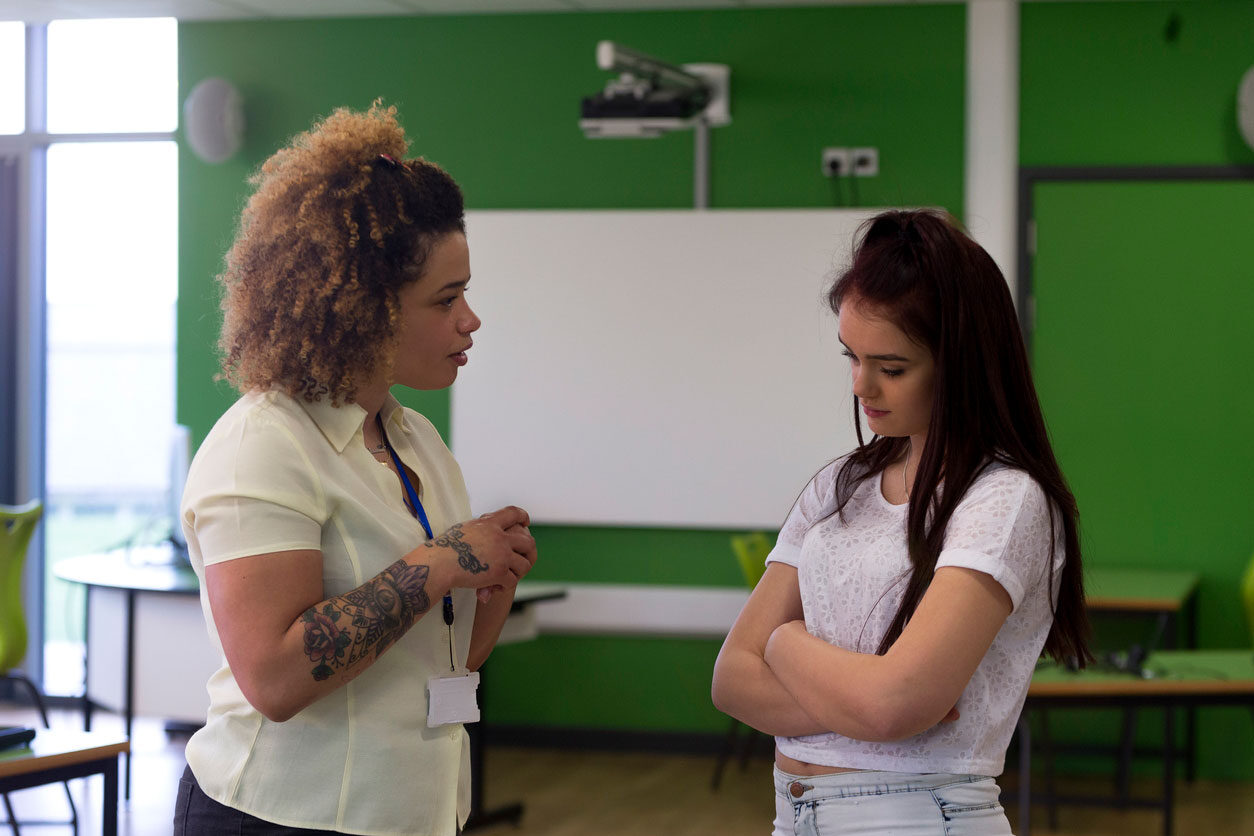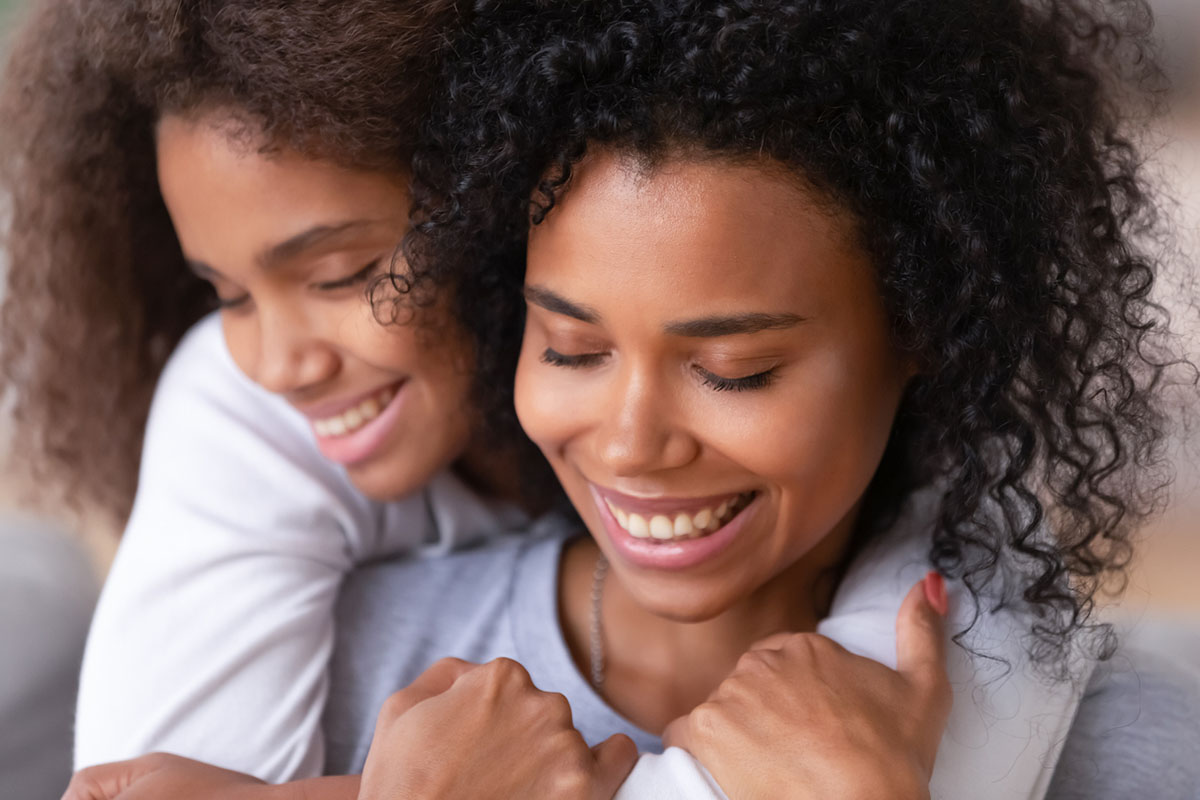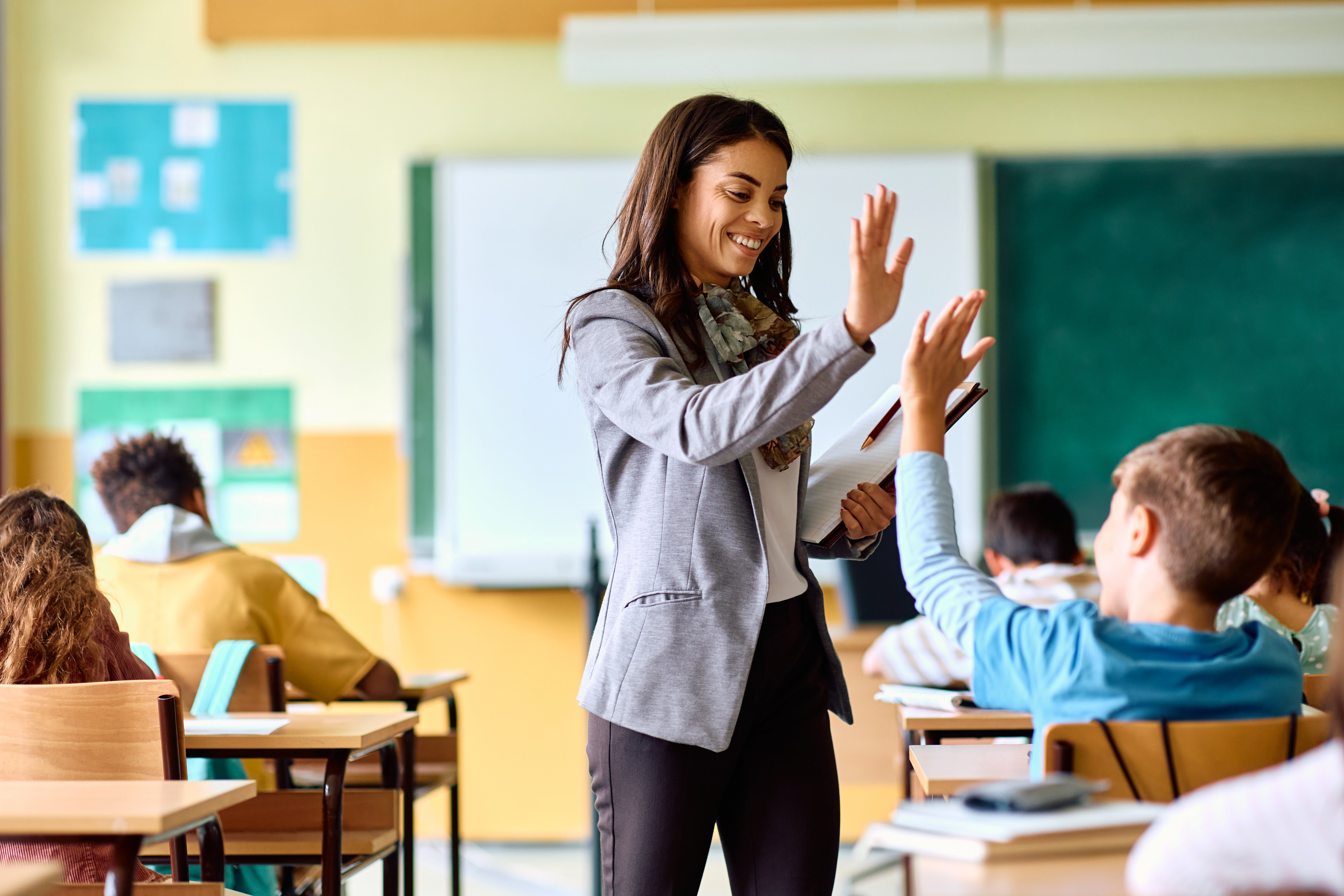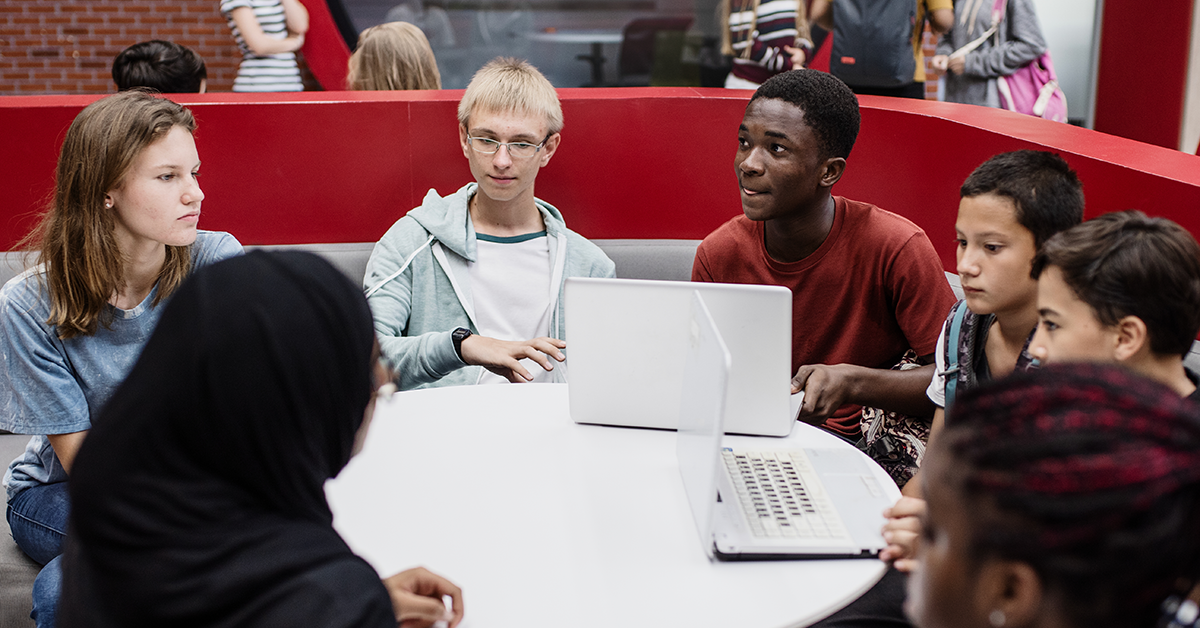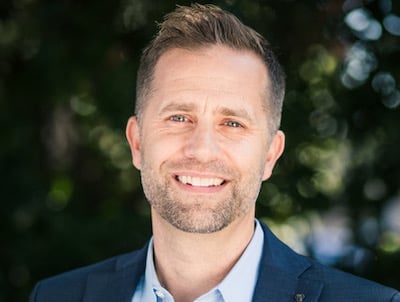Blog
Hope, Simplicity, and Nurturing a Community Mindset
“Start out with the assumption that this child is doing the best they can, and if the best that they can do right now isn't good enough, think about what we can change about what's going on around them so that they can do better. Start with that baseline assumption that this child is doing the best that they can.—Krista Mehari
It takes a village to raise a child—and it takes an engaged community to help young people thrive.
In the third episode of our Rooted in Relationships podcast, Search Institute President and CEO Dr. Benjamin Houltberg hosts a lively conversation with Dr. Krista Mehari.
Mehari is a licensed psychologist and applied researcher with extensive experience creating research‑informed approaches to identifying and leveraging community strengths for systemic change.
During the conversation she provides powerful examples of what happens when young people define character within their own community with the help of developmental relationships and help shape their own futures.
Listen to the entire podcast here.
Seeds of Interest
Ben: Thank you for being here. I was interested in a lot of aspects of your work as a clinical psychologist and also as someone who wants to understand how to work with communities to improve them. I'm curious about your journey there, your story of what brought you to this point
Krista: There are always thousands of factors that steer people one way or the other. I can think of two particular examples from high school. I remember a classmate of mine was acting in a way that one of the teachers interpreted as defiant. I remember thinking that it was over something really dumb, like she didn't take her hoodie off her head when he asked her to. And so he eventually kicked her out of the classroom. She was already doing poorly in that class, and I remember feeling angry with him that he was doing that to her and thinking it was kind of counter to what his job was, which was to promote her access to her education. And so I started thinking about how to help youth better adapt. Later, I started thinking more about what we can do to help teachers interact with youth in a way that also helps to promote their well‑being.
There was another incident in high school. I grew up in a neighborhood that had its own fair share of violence. One time I went out on my porch because there was a lot of noise, and there was a huge fight that was happening at the corner of the block.
It was like maybe 20 people, and it was physical. But nobody had a gun out at that point, that I saw. Somebody must have called the cops because a police car rolled up, and all the people who had been fighting each other kind of turned and started hitting the police car to get the police car out of the neighborhood. Theoretically, it was the police's job to keep the peace. And nobody trusted that.
These were seeds of my interest: What can we do to help reduce aggression among individuals? What can we do to help reduce violence in our communities?
I did take a clinical path through that. And I think working with people one‑on‑one felt like it was the same story happening over and over and over again—lots of exposure to violence resulting in lots of traumatic stress—and thinking: How can we stop this from happening in the first place?
Finding the Spark, and the Hope
Ben: That sense of justice, and understanding of injustice… Who in your life during that time helped champion that spark around that feeling that you wanted to understand it more and wanted to impact the world? What are some of the relationships in your life that helped you work through that?
Krista: I remember a friend's mom was a clinical social worker, and she talked about things in a way that I didn't hear other people talk about. She talked about youth and helping people engage in more adaptive behavior. And I loved the way that was so nonjudgmental and so kind towards the people who aren't necessarily engaging in adaptive behavior. There was also a professor I had in college, my first Black female teacher.
She talked a lot about making an impact at a larger scale. So instead of thinking of just working with individuals, thinking of what you can do that creates even larger ripple effects.
Ben: I think often about that idea that behavior, without context, will often not make sense, or we'll give simple answers to a behavior. But once you understand the context, you realize that some of the behavior is adaptive, even if it goes against the norm, like the student in the classroom. One of the challenges practitioners often have is how do you change the system or the context? We know that as a white male, I would interpret behavior from students of color probably in a different way, just from a bias, even if I was trying not to show bias. What are some ways that teachers and practitioners can do a better job?
Krista: I think the first thing I want to say in response to that is that it is hard and it is overwhelming. And I think it's even hard to give a quick response to that except empathy.
I know for me, in terms of developmental relationships, it's been really important for me to have people who I work with who have been working longer than me. One thing that has come up as we've been doing interviews with community stakeholders has been how we can foster hope in youth. We hold onto the hope for our youth when they can't hold on to the hope for themselves. It helps me to think of people alongside me, and that together we are part of a community of people who are working to promote the well‑being of youth as they grow.
Ben: Yeah. I love that idea, because what I take from that is you're not alone. I think that does produce hope because it's a lot less daunting when you say we're in this together.
Krista: That is the main thing for me is just recognizing that we're part of a community of people. Any one of our interactions with youth is a moment in their story, that's being shaped by many, many moments in time with many, many other people—and recognizing that we can do the best we can in the moment we're in.
And I think related to changing the culture and climate, the biggest thing is time in terms of having patience about how long time will change. Some intervention research that I've read and that I have been affiliated with shows that some of the real impacts in terms of aggressive behavior, [it] doesn't really change until an intervention has been in place for about three years.
This, again, points to the fact that we're not really trying to change individual behavior. We're trying to change a culture that makes some behaviors more or less adaptive. And so having the patience to recognize that interventions take time. I think one problem with that is that a lot of funding mechanisms last three years, for example. So you're hoping to show that something changes based on six months of intervention. Then we're never really fully able to evaluate the impact of a program over time.
The Importance of Peers
Krista: I think recognizing that it takes time and having the resources in place to be able to examine a sustained effect is really important. And another thing to think about is the impact of friends on behavior. What we found is that friends’ pro‑social behavior and friends’ problem behavior both uniquely impact adolescents’ behaviors. So we can't just work to improve prosocial behavior and expect that aggression, delinquency, or substance use will go away. We might just get children who are using substances and stealing and fighting each other who are also being really kind and helpful.
Making sure that we have interventions that both work to change pro‑social behavior and aggressive or other problematic behaviors within an individual child and within the larger peer context. And then making sure that teachers are able to be kind and supportive while at the same time recognizing that student behavior really impacts youths’ own behavior as well.
Ben: That's interesting. There are two points that I would love to hear you elaborate more on. First, if we think about a three‑year process for impact, I wonder how many really promising interventions we never really get to see live out because maybe we didn't let them come to fruition. And are there other things within interventions that make them particularly impactful for kids when we're talking about reducing more of these antisocial types of behaviors and then [promoting] pro‑sociality.
Krista: I think the one thing is having multi‑level interventions that equip youth with the skills that they might not have at the individual levels: social‑emotional learning factors like anger management, social problem‑solving, empathy, and perspective‑taking as well as trying to change classroom climate classroom behaviors, where behaviors that are desired are being reinforced as opposed to having a punitive approach to undesired behavior.
And then having some kind of parent component to that, where parents are looped in on that conversation is helpful too. Overall, high‑quality implementation usually includes high levels of administrative support of the programming. Programs get implemented better when the administration is behind social‑emotional learning programs, when the teacher is enthusiastic about it, when the youth are engaged and responsive during those sessions, and when there's a pretty high dosage. I think those are the main factors that have been associated with better outcomes for youth.
Who Is Responsible for Youth Resilience?
Ben: I love this idea of the multi‑level intervention, because all of our lives are shaped deeply by our experiences across multiple systems and relationships. And what Ann Masten talks about is that resilience really is across multiple systems. So then the question that comes is, who's responsible for youth resilience? We, as caring adults and people around them, are fostering environments for youth resilience. And I think that your work really displays how the community can really impact youth. And of course, youth had their own, their own autonomy for change to talk about that interaction between kind of the individual approach of change and growth and overcoming obstacles for resilience. And then also maybe the community responsibility for that.
Krista: There is this really complex interaction between individual level of vulnerabilities and resources and contextual vulnerabilities and resources that predicts how an individual child is going to do. We always have those stories of “This particular child grew up with all this trauma and all this abuse and in this really under‑resourced neighborhood and this failing school, but they did amazingly well, so you can do amazingly well too.” I think Americans really love this idea of grit and pulling yourselves up by your bootstraps. I'm not arguing that that's not true, but I think sometimes we really ignore potentially the host of other things that this child who made it, who succeeded, had going for them that maybe another child didn't have going for them.
It sometimes can promote this almost blaming mentality for the children who are struggling. One developmental psychology professor I had put it, “won the genetic lottery.” They have so many things going for them and they have a lot of internal resources that help them to do okay, even under a lot of stress. And there are some children who did not win the genetic lottery who need more external support than what they're getting. So I think usually it's best to think of all children as potentially fragile, as people who need supports and structures and scaffolding in place so that they can grow well.
Ideally, we're creating interventions that are multi‑systemic so that we can take advantage of the strengths that a child has in any particular area, internally or externally, and build off those things. So maybe if one child gets all these anger management skills and is able to implement them, they'll be okay. But for some children that's not sufficient for them. And that's why we put all of these systems in place.
Trauma‑Informed Communities
Ben: I want to talk a little bit about the idea of being trauma‑informed, because if I'm a practitioner, I'm a teacher, and I'm listening and I hear you talk about intervention, I might say that's intervention for professional psychologists or school counselors.
Talk a little bit about those day‑to‑day interactions with teachers and friends and, and some of those multi levels that you've worked on and you've researched.
Krista: Thank you for clarifying that. I do think when I say intervention, I think of any moment in time where I'm doing something that has the goal of changing how somebody is feeling or acting or thinking.
I think teachers are an intervention by their existence. And I think there are so many things that have been shown to help—really simple behaviors that teachers can do. For example, greeting a child by name when they enter the classroom reduces the rates of problem behaviors in a classroom. Being kind, being responsive, calling on students, thanking them when they respond, thanking them for complying with requests, or praising them for adhering to classroom rules. All of those things are intervention behaviors that teachers can do that have been shown to create a positive classroom climate and reduce problem behaviors in the classroom. Friendship is an intervention; it creates a really good buffering effect for youth who are experiencing victimization or other stressful things. And, of course, we have so much research on positive relationships with adults outside of the home and how much that protects youth from a lot of undesired outcomes. A lot of this is consistency and kindness and letting the child know that they're seen and heard and cared about. And that they're important.
The Power of Kindness
Ben: And don't you think, Krista, ultimately that's exactly what all of us want? That a kid wants to be seen beyond just his behavior? I think of the young girl in your classroom that had the hood up that you told at the beginning of your story. What would it have been like for that teacher to approach that student in a kind way? I think that sometimes we underestimate the power of those kinds of things.
Krista: I think we definitely do. This isn’t scientific, but it is something that has really shaped my life. My dad grew up in Ethiopia, and he often described his relationship with his dad as more of a boss/employee relationship than a father/son relationship. And he is the best father. He has always made us feel like we were the center of the universe. One time I asked him, ‘How did you get to be such a good father if you never had that modeled for you?’ And he remembered there was one of his dad's business partners. Whenever he was in the house, he would ask him how he was doing and talk to him. And he said he felt like he was important. And when he grew up, he always wanted to make sure that the children who he interacted with felt like they were important too. As children and as adults, it's something that we need to know—that we matter, that we belong. That’s a lifelong need.
Ben: What a beautiful story, and what a hopeful story too. Some of your background and research has shown that those adverse circumstances, the ACEs, do get under the skin, and they impact us. But the idea that relational wounds require relational healing and that healing can come in a community of people in a way that provides hope. So when a student walks into your classroom and may be disruptive or may push you away, but that constant kindness of greeting them and saying, ‘I'm not justifying the behavior, but you matter, I see you, I care about you, you have potential.’
Krista: Yes, even if you haven't had a huge body of trauma, it's always healing to feel like you're a person who matters and that your voice matters. And that you're heard. I appreciate the connection that you've drawn with the participatory action research that we do, and recognizing that sometimes what we're doing is planting seeds or giving these moments in time. We don't always necessarily know what the outcomes are going to be, but we hope to create a healing experience in those moments.
So my youth advisory board, which is mostly 10‑ to 13‑year‑olds, has met once a month for almost two years now. Just last month, I felt we had this breakthrough where we were really connected and on the same page, and that they trusted that what I was moving towards was something that was elevating them. I think sometimes as adults, we want the reinforcement from youth right away. And sometimes what we get is a year of being pushed away before they know that we're trustworthy, and that we'll be there, and that we're going to be consistent.
Community Participatory Action
Ben: You're doing some really cool work around community participatory action research. And some listeners may not know exactly what that is. I know a big part of your mission and your purpose has been to engage the community to define what character and values mean for them—and then really facilitating solutions that are from the community.
Krista: Community‑based participatory research or participatory action research is based on the idea of using research as a tool to help communities move towards their goals and values. So from the beginning, you're working with a community to identify what they see the problems are, what their goals and values are, what the existing strengths are. Then putting together how are we going to go about addressing this? And how are we going about seeing whether or not that worked, so that hopefully you end up designing an intervention or project or program that is going to work in the context that it was made for, that it's something that is going to be sustainable over time, and it's something that's going to be scalable and can impact other similar communities as well. It kind of is a flip on the normal prevention science model, where you do a lot of the things in research controlled environments, and then try to make sure that it's feasible and acceptable and sustainable. It's also a way to hopefully elevate people's voices to give them a little bit of control over the process and make sure that what we're doing is something that is wanted and is good for the intended end users.
Ben: It just makes so much intuitive sense, too. If we think about it, someone can tell me all day, ‘You need to eat healthier. You need to go exercise.’ You telling me doesn't give me my own autonomy to figure this out, or have motivation. Talk a little bit about who you're working with in Mobile, Alabama.
Krista: Our community leader is Marie Testing, who’s the director of community engagement at United Methodist and our city mission here. She's been working with youth in the community for probably more years than I've been alive. She's amazing. She knows everybody. I also have a colleague on the research side who is a philosopher, so it's been interesting to think about philosophy and virtue development. And my colleague, Joe Courier, who is also a clinical psychologist with a specialty in spirituality. So thinking about how we can tap into big values here. It was like they came up with what character meant to them. And one of them is these big values, or this connection to something bigger than yourself.
I feel like that across the board, everything has turned out a hundred times better than what I could have done if I was just sitting in my office.
“Hope Is Like Driving Through a Storm”
Ben: Tell me more about that kind of process. What are some of the activities that you're doing?
Krista: So we've had a series of community advisory board meetings, which mostly involves leaders in the community who work with youth or who are faith leaders. We've had several parent focus groups around this area. And probably our biggest input has been the monthly meetings with our youth advisory board and the regular meetings with the teachers at the after‑school sites that we've been working with. The youth will be able to weave the other virtues that we focused on—hope, peace, wisdom, and forgiveness—all linked back to big values.
“What do you want to be moving towards with hope?” The definition that we came up with was “Seeing the future you want and moving to make it come true.” One of our community advisory board members said, “Having hope is like driving through a storm.”
In Mobile, we have tons of rainfall. I think we get more rain than any other city in the United States. She said, “You keep driving because even though you can't see it, you know, somewhere up ahead, there is a place without clouds.”
Some of these children have only been in a concrete building all of their lives. And you can say, “Come out, come out, there's sunshine here.” But they don't even know what sunshine looks like. So why are they going to move towards that? So first you have to show them the sunshine, and then you can help them move towards it.
Ben: What a powerful image that is—to really know what sunshine is, or what is that thing that you're moving through or driving through to get to the other side of the storm? I can imagine for a lot of the youth, too, they've the messages and their environment and the way that as a society we have created those oppressive systems for many of these kids that the odds are stacked against them already. I was struck by that when I met Maria; she just had that ability to make an impact on you right there. She had that sense of hope. What are some of the key ingredients to that? What are some of the things that help people really create a hopeful future?
Krista: I think there has been this idea of adults kind of seeing the spark inside of you and calling it out and making it grow. There is that idea of seeing the potential in a child and calling it out, and the children being able to have the opportunities to learn what they're good at and to practice those things and to be encouraged in those things. Places where there's more than just worrying about having food on the table and paying bills—a place for creativity and exploration.
It's the community's job to make sure that there's more than just scarcity. A lot of people talk about the divine in our communities, that there is a confidence in the divine that there's a confidence in the good. Even if you never see it.
That's been really profound to me, as somebody who sometimes struggles with her levels of hope, that so many of the older adults who I've talked to have no belief that things are going to change in their lifetime. But they are confident that things will change in their grandchildren's lives or in their great‑grandchildren's lives.
Addressing Gun Violence with Community Action
Ben: What's the next step for you?
Krista: One new project that we're starting is also a participatory action research project. It's specifically around gun injury prevention. Lots of times we think of violence as a spectrum of behavior. At the low end is pushing and shoving, and at the more extreme end is acts that result in death. Currently guns are used in about 80% or 90% of the homicides of young Black men in the United States.
And so with other community stakeholders and with public health messaging and interventions, thinking about how, how can we weave this net together to increase the likelihood that youth are going to have a chance to thrive? What we're hoping to do is kind of really understand people's attitudes and behaviors and practices around guns so that we can design prevention and intervention strategies that are going to be maximally effective and consistent.
Parting Advice
Ben: I am a big fan of yours, Krista. I love what you're doing. I think it's so important. If you're going to give a practitioner—a teacher, a coach, afterschool staff—a couple of pieces of advice based on the work they do and what you've found, what are some things that you would say?
Krista: That is a great question. I think the main thing I would say is start out with the assumption that this child is doing the best they can, and if the best that they can do right now isn't good enough, think about what we can change about what's going on around them so that they can do better. And just kind of starting with that baseline assumption that this child is doing the best that they can.

